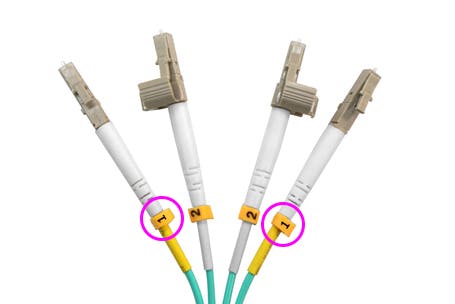

- #USE A LOOPBACK CABLE HOW TO#
- #USE A LOOPBACK CABLE REGISTRATION#
- #USE A LOOPBACK CABLE FREE#
- #USE A LOOPBACK CABLE MAC#
Iii C ONTENTS A BOUT T HIS G UIDE Introduction 1 How to Use This Guide 1 Con ventions 2 1 I NTRODUCTION Product Featur es 1-1 Emulated LAN (ELAN) O verview 1-3 Software Descriptions 1-4 Network Driver.
#USE A LOOPBACK CABLE REGISTRATION#
locations should send the registration card to the U.S. Ĭustomers in the countries shown belo w should send the completed registration card to the appr opriate address. T o ensure the ver y best 3Com service and suppor t, tak e the time to complete the product registration card. ® L IFETIME W ARRANTY 3Com ’ s EtherLink®, T o kenLink®, T okenLink V elocity™, F ast EtherLink, and FDDILink ™ network inter face cards have a Lif etime W arranty. No par t of this documentation may be reproduced in an y form or b y any means or used to make any derivative w ork (such as translation, transformation, or adaptation) without permission from 3Com Corporation. Ii 3Com Corporation ■ 5400 Bayfr ont Plaza ■ Santa Clara, California ■ 95052-8145 © 3Com Corporation, 1997. Open Audacity, and turn off Software Playthrough via Transport > Transport Options.Ĭhange the Recording Device to Soundflower (2ch) and Playback Device to Built-in Output, and you’re good to go.® ATML INK ™ 1 55 PCI N ETWORK I NTERFACE C ARDS U SER G UIDE A member of the 3Com family of ATMLink network interface cards Part No. Under Sound Effects, in the Play sound effects through dropdown menu, choose Line Out. In your Mac’s Sound Preferences, change the Output and Input to Soundflower (2ch). Here's how to use it:ĭownload Soundflower for OS X 10.9+ or OS X 10.6-10.8. Soundflower requires extra setup, but it also ensures that you won’t have to worry about most email alerts and other notifications being recorded.

#USE A LOOPBACK CABLE MAC#
Make sure to set the Multi-Output Device on your Mac to iShowU Audio Capture and Audacity’s Recording Device to the same. To get started with iShowU Audio Capture, follow these steps:

If you don’t fancy wiring up a loopback cable (and reducing the quality of your recordings), try using iShowU Audio Capture or Soundflower instead. You can also use third-party software to capture audio that is being played on your Mac. In the Recording Device drop-down, choose Built-in Input. Choose your microphone from the list, and press the Record button. To get started, create a new track by clicking on Tracks > Add New > Stereo Track or Mono Track.Ĭlick on the Recording Device dropdown menu (the one with the microphone symbol beside it). Here, you can change the Audio Host, as well as the Recording and Playback Devices-essential requirements for recording in Audacity. The steps for recording audio from a microphone-whether you’re using your computer’s built-in mic or an external one-is identical for both Windows and Mac.Ĭrack open Audacity and familiarize yourself with the Device Toolbar, located beneath the playback buttons. Whether you’re on Windows or Mac, there are several ways to capture recordings from either a computer or microphone. This means that you can get high-quality sound without the steep learning curve.
#USE A LOOPBACK CABLE FREE#
The favored free software of professionals, it's also simple to use when you’re just getting started. Audacity is the perfect tool for recording and editing audio.


 0 kommentar(er)
0 kommentar(er)
